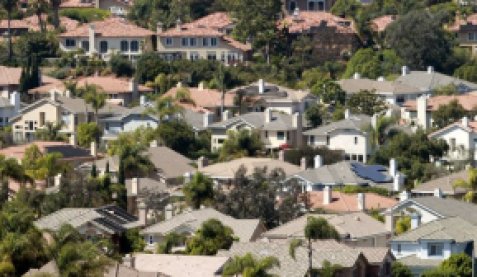San Diego working on affordable housing
BRIANNA HARRINGTON
BUSINESS EDITOR
@BNH1995
San Diego has been working toward making city living less expensive for those that cannot afford it. Their aim is to create affordable housing around San Diego so that people can commute to work easier, and live in a more central, accessible location.
The Redevelopment Agency and San Diego Housing Commission (SDHC) created the Comprehensive Affordable Housing Strategy Collaborative (CAHSC). The CAHSC is known as the Collaborative. The priority of the Collaborative is to increase affordable housing while simultaneously providing housing development for other housing developments including senior homes and homes for the mentally ill.
The resources that the Collaborative will be using to maintain their initiative come from tax increment funds—a public financing method used to subsidize community-improvement projects—that are set aside for low and moderate housing income by the City Redevelopment Division, and other San Diego development divisions.
The SDHC also provides low-interest loans to help developers acquire, rehabilitate and build long-term affordable housing. To qualify for this program, potential customers must meet certain guidelines.
Freshman Alex Weis offers a diverse opinion on this subject.
“I think the desire to help people find housing is a good one, particularly as a college student wondering where I will live in years to come.” Weis said. “But, changing the housing market can be tricky. That is why I am concerned with the ‘how’.If it forces prices down, then it may ultimately cause a shortage of housing or lower the quality of it. If it subsidizes buyers, who receives the subsidy and where is it coming from? I think that initiatives like this have long-lasting effects, and it will particularly affect neighborhoods because prices are being artificially pushed down.”
Buyers that earn no more than 100 percent of the San Diego area median income— which is how much the family makes compared to the rest of the San Diego residences, taking into account family size— may qualify for a deferred-payment, a second trust deed loan of up to 17 percent of the purchase price, and an interest rate set at 3 percent with no payment required for 30 years. The payment on the loan is not required until the home is sold or no longer occupied.
Buyers earning no more than 80 percent of the San Diego area median income are eligible for up to $15,000 or 4 percent of the purchase price, whichever is less and buyers earning 100 percent are eligible for $10,000 or 4 percent, whichever is lowest. The grants awarded to these buyers must be repaid if the home is sold, refinanced, or no longer owner-occupied.
Qualified homebuyers with income not exceeding 140 percent of the San Diego area median income may claim a federal income tax credit. Buyers earning 80 percent or less, or buying in a specified neighborhood, may claim a tax credit of 20 percent of the annual interest paid on their mortgage; all other buyers receive 15 percent. This reduced tax burden helps the buyers qualify for mortgages because it boosts their net earnings. However, the buyers must repay the tax if they sell their home within the first nine years.
Along with the affordable housing initiative, the SDHC has created the Home Safe Home program, which offers services to low and middle-class homeowners to make their homes a safe place.
Low-income homeowners and landlords with low-income units within the city of San Diego are eligible for assistance. The program offers zero interest, deferred payment loans up to $15,000 for single-unit properties, and mobile home repair grants up to $5,500 for health and safety repairs. None of the loans require payments until the property is sold or new loans are made. This program also targets eight specific former redevelopment areas with deferred payment loans of up to $10,000 at a three percent interest that is forgivable for 10 years.
The largest program that the SDHC has created is the Housing Choice Voucher (HCV). This program currently helps 14,626 households in paying rent that they cannot afford. The voucher recipients pay between 30 and 40 percent of their adjusted monthly gross income rent, this determines how much of the person’s income is taxable.
The SDHC gives preference to applicants who are families of two or more people that have a dependent,individuals age 62 or older, veterans, active US military service members, or homeless persons.
So far, the HCV has created more than 13,000 affordable homes through low-interest loans and other incentives and provides assistance to about 12,000 very low-income households every year. The HCV has developed 2,700 affordable homes downtown and the tax increment funds have been used to build 250 additional housing units outside the downtown area.
Along with building homes and providing aid and incentives, the HCV has also repaired more than 11,000 homes, helped more than 3,400 low-to-moderate-income families and individuals, and are responsible for the creation of more than 400 single-family homes in the southeastern community.
